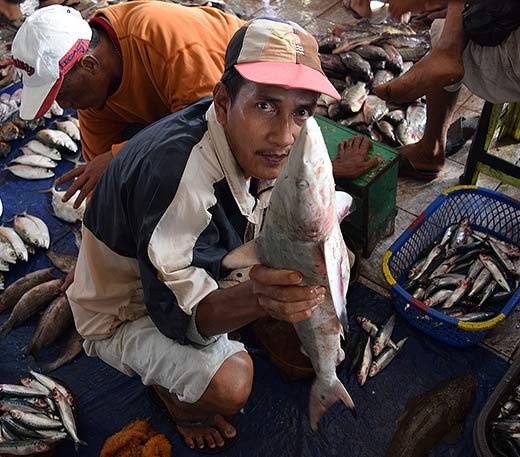Scientists have discovered that a quarter of fish from samples across world fish markets especially in California and Indonesia apparently contain surprising amounts of man made garbage such as pieces of plastic or fiber inside their guts.
In this new study, scientists reveal their findings which mark as the first direct link of man made debris and fish where garbage goes directly onto dinner plates of consumers.
According to lead author of the study, Chelsea Rochman of the University of California, Davis, among these two fish markets from the United States and Southeast Asia, there are not too many differences when it comes to the amount of debris found inside the fish from the samples however, there are variations in the types of debris uncovered. She noted that this type of debris found inside the fish is apparently driven by local waste management in the region.
Researchers studied and further examined 64 fish specimens in fish markets located in Princeton and Half Moon Bay in California and 76 fish samples from Makassar in Indonesia. The team revealed that 80 percent of debris that were recovered from fish samples in California all contained fibers, in Indonesia however, all the debris were composed of plastic.
Scientists suggest that the reason for this different variation of fish debris found in different regions is that California uses a more advanced disposal system where they collect and recycle plastics better but the fibers that escape to the sea originate from clothes washing from washing machines that could not be completely filtered thoroughly by treatment plants.
On the other hand in Indonesia, the nation reveals a poorer state of waste collection management and recycling practices where large amounts of plastic end up in the beach, leading to the oceans.
Rochman says that in order to find better and more efficient solutions for each region, it is crucial to gain a better understanding of the differences in local waste management practices.
Regarding the debris found inside the fish guts, researchers also note that the plastic and fiber are most likely to get eaten by humans only if fish are purchased and eaten whole as opposed to fillets. Scientists are still further studying if chemicals from the plastic consumed by the fish can get absorbed by the meat that can lead to harmful health effects for human consumption.
In addition, according to the National Oceanic and Atmospheric Administration, 90 percent of seafood in the U.S. are imported where 100,000 tons of fish originate from Indonesia during the first half of 2015 alone suggesting that it is highly likely that fish with plastic inside their guts can end up in many homes across the country.
This new study is published in the journal Scientific Reports.



























